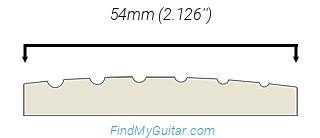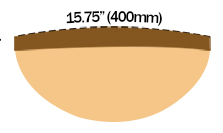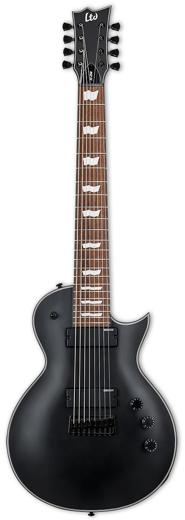LTD EC-258 vs Schecter Omen-8
Reasons to Get
LTD EC-258 over Schecter Omen-8
Reasons to Get
Schecter Omen-8 over ESP LTD EC-258
Other Key Differences
LTD EC-258 vs Schecter Omen-8
Shared Features
LTD EC-258 vs Schecter Omen-8
Common Strengths
- Expensive Wood
Common Weaknesses
- Pickup Alter Switch/Knob
- Weight Relief
- Locking Tuners
- Stays in Tune (Evertune)
- High-Quality Frets
- Compound Radius Fretboard
- From a High-Quality-Standards Country
- Luminescent Sidedots
- Strap Lock
- Top Pickup Brand
- 21:1 Tuner Ratio
- Active/Passive Preamp
Table of Contents
Price History Comparison
These are affiliate links. We may earn a fee if you purchase after clicking. These prices are prone to error. Make sure you're buying the right product after clicking on a link from our site. We are not liable if you buy the wrong product after following these links. As an Amazon Associate site we earn from qualifying purchases.
Which One is Better Overall?
After going through our comparison algorithm, the results show that the Schecter Omen-8 is probably the better product overall with its final score of 66 compared to the ESP LTD EC-258's 63 score, although not by a lot.
The Schecter Omen-8 wins when it comes to sound, playability, build quality, value for the money. This means that it wins over the ESP LTD EC-258 in every aspect.
If you got small hands, you'll probably feel more comfortable playing the Schecter Omen-8.
Which One is Better for Beginners?
Both meet 4 out of our 8 criteria items for beginner friendliness. This takes into account the type of frets, scale length, nut width, bridge type, fretboard radius, and neck profile to determine the easiest combination for new players. If you're looking for your first guitar to learn how to play, you can't go wrong with either of them.
New Player Friendliness
ESP LTD EC-258- Comfortable shape
- Easy-to-use bridge
- Tall frets
- Comfortable neck
- Comfortable fretboard
- Narrow nut
- Short scale
- Locking tuners
New Player Friendliness
Schecter Omen-8- Comfortable shape
- Easy-to-use bridge
- Tall frets
- Comfortable neck
- Comfortable fretboard
- Narrow nut
- Short scale
- Locking tuners
Nevertheless, when it comes to choosing an instrument, you should pick the one more compatible with your personal style. Still, below we'll try you to give you our results as objectively as it's possible to help you decide.
ESP LTD EC-258 Overview
- From ESP LTD's 2017 EC series
- Made in Indonesia
- 8 strings
- 26.5"'' scale
- 15.75" Fretboard Radius
- Mahogany body
- 3Pc Mahogany neck
- Roasted Jatoba fretboard
- Bridge pickup: ESP Designed LH-308B (Humbucker/Passive)
- Neck pickup: ESP Designed LH-308N (Humbucker/Passive)
- 2 volume and 1 tone Speed knobs
- 3-way Switch
- LTD Fixed bridge
- Thin U Set neck
- 22 XL Jumbo frets
- LTD tuners
- Compare Specs >
Schecter Omen-8 Overview
- From Schecter's 2008 Omen series
- Made in Indonesia
- 8 strings
- 26.5"'' scale
- 16" Fretboard Radius
- Basswood body
- Maple w/ Carbon Fiber Reinforcement Rods neck
- Rosewood fretboard
- Bridge pickup: Schecter Diamond Plus (Humbucker/Passive)
- Neck pickup: Schecter Diamond Plus (Humbucker/Passive)
- 1 volume and 1 tone Dome knobs
- 3-way Switch
- Schecter Custom Hardtail w/ String Thru Body bridge
- Thin C Bolt-On neck
- 24 XL Jumbo frets
- Schecter tuners
- Weight between 8.45lbs (3.8kgs) and 8.75lbs (4kgs)
- Compare Specs >
Sound Quality Comparison
The wood used in an electric guitar or bass is not as important to determine the final tone. However, some people prefer specific wood types, so we'll take a look at those first. Then, we'll take a look at the electronics to determine the versatility and sound quality of each instrument.
Woods Used in the ESP LTD EC-258


Mahogany is a fairly rare wood nowadays. It's used mostly for bodies due to its relatively lightweight. Gibson popularized it with their Les Paul guitars during their golden years, so this wood has a lot of good reputation behind it. The most expensive type comes from South America and it's still used by Gibson even today. Find out more about Mahogany.
Jatoba is a hard and dense wood that emphasizes the mid-lows, giving a fuller, more round sound than, for example, Mahogany. However, it also has a lot of clarity in the top end. Find out more about Jatoba.
Woods Used in the Schecter Omen-8



Maple is one of the most popular necks for good reasons. It is a strong wood that is relatively cheap to make and looks beautiful. The highest quality maple is the hardest that comes from North America. Find out more about Maple.
Rosewood is an almost purple-looking wood that is used mainly for fretboards since it's heavy, rare, and expensive. It's sometimes used on acoustic guitar bodies to create stronger warm tones. Find out more about Rosewood.
Basswood is a lightweight type of wood that isn't as expensive as other popular choices for guitar building. It gives more power to the mid-range frequencies. Its color can vary from pale white to light brown. Find out more about Basswood.
Winner: Tie.
Pickup Configuration
Both pickup configurations are HH. Double Humbucker (HH) is the choice for people who want a fuller, more round sound with tons of mids and lows. Humbuckers also get rid of the hum noise that plague single-coil pickups. They can work out for almost any genre going from Djent to even Jazz.
Pickups Quality
The ESP LTD EC-258 has pickups from a more specialized brand than the Schecter Omen-8. Its pickups should simply give you a better, fuller sound, although it all depends on what type of music you're going to play. We recommend these pickups for Heavy Metal and similar genres.
Both use Passive pickups. This is what's used for most music genres. They have a regular output and will serve you for both high-gain and clean tones. The alternative (Active pickups) offer a higher output that is mostly used for heavy music.
Winner: ESP LTD EC-258.
Versatility Comparison
Some instruments offer you more ways to explore your creativity than others. Below you'll find how both compare when it comes to versatility.
Switch Options
Both are equal when it comes to the pickup switching option.
Neither of them come with some kind of coil split or pickup mod option. This makes both lacking in terms of versatility.
They both share the following switching options:

When evaluating versatility, we also take into consideration bridge and neck joint type, number of frets, switch options, amount of pickups and more.
Winner: Schecter Omen-8.
Final Sound Quality Scores
Build Quality Comparison
When it comes to build quality, we like to take into account everything used to build the instrument. This includes materials, hardware and the quality control expected depending on the country where it was built. Let's see how the ESP LTD EC-258 compares to the Schecter Omen-8.
Country of Origin
The manufacturing country can tell a lot about the build quality of an instrument. Both in this comparison where made in Indonesia.
Indonesia is becoming the most popular country for guitar building because they can make good instruments for a low price. Some people think that they're 'the new China' when it comes to build quality. But the truth is that Indonesian guitars are more consistent, although Chinese quality has improved a lot in the last few years.
Winner: Tie
Nut Material
If you want your guitar to stay in tune and sound good, you need a well cut nut. Nut quality can be inconsistent even when comparing two copies of the same model. The best way to make sure you're nut will be well done is by getting a nut made by an expert company like TUSQ or Micarta.
The ESP LTD EC-258 has a Plastic nut. This is a low-quality nut that you might want to consider upgrading soon. Bone and TUSQ nuts are the best for guitars with a fixed or simple tremolo bridge.
On the other hand, the Schecter Omen-8 comes with a Black Tusq XL nut. TUSQ nuts are usually the highest quality you can get. Black TUSQs are made from a special slippery material that helps the strings get back to its original position (one of the keys to tune stability).
Winner: Schecter Omen-8.
Fret Material
Most fret wire is made of nickel silver. This material eventually wears down after a lot of use and most instruments end up needing a complete fret replacement. However, some expensive models come with stainless steel frets. This is what you should aim for if you can afford it.
Unfortunately, none of them come with stainless steel frets.
Winner: Tie.
Bridge
The perfect bridge for you will depend on your playstyle because they all have advantages and disadvantages. However, some bridges are more expensive—like Floyd Roses and Evertunes—and thus add more value to a guitar.
Both come with a similar bridge: Fixed. It's a simple bridge that is very beginner-friendly since it doesn't require any set-up. You can swap strings easily. It might also give more sustain since it doesn't have complex moving parts that make the strings lose vibration. However, it doesn't have the same versatility as a tremolo bridge.
Since we need to be objective, the most expensive type of bridge will be the winner of this section. In the end, this doesn't matter if you're not going to use the bridge for its original purpose, so choose the bridge that fits your playing style better.
Winner: Tie.
Tuners
Both come with regular tuners. The ESP LTD EC-258's are LTD while the Schecter Omen-8's are Schecter
Winner: Tie.
Neck Joint
Contrary to popular belief, the difference in sustain and tone that some neck joints give to a guitar is simply unperceivable—if they're all well built. However, some of them do have advantages over the others.
The ESP LTD EC-258 has a Set neck joint. This neck is tightly glued to the body. They give you the least versatility because you can't swap them for a neck that fits your hand better if you want to, unlike bolt-on necks. Some people think this gives more resonance and sustain, but there's no real difference if the bolt-on joint is well built.
On the other hand, the Schecter Omen-8 comes with Bolt-On neck joint. This neck is joined to the body by 4 bolts that you can simply unscrew. This allows you to replace the neck or take it off for travel. It's the most common and cheapest way to build a guitar.
Winner: Schecter Omen-8.
Here is the list of features that were considered when choosing the winner in the Features subcategory:
ESP LTD EC-258
- Expensive Wood
- Cheap Fret Wire (NS)
- No Locking Tuners
- Made in Indonesia
- No High-Quality Nut
- No Top Brand Pickups
- No Neck-Through Build
- No Push Knob or Extra Switch Option
- No Weight Relief
- No Luminescent Inlay
- No Tremolo
- No Compound Radius Fretboard
- No 21:1 Tuner Ratio
- No Strap Lock
Schecter Omen-8
- Expensive Wood
- Black Tusq XL Nut
- Cheap Fret Wire (NS)
- No Locking Tuners
- Made in Indonesia
- No Top Brand Pickups
- No Neck-Through Build
- No Push Knob or Extra Switch Option
- No Weight Relief
- No Luminescent Inlay
- No Tremolo
- No Compound Radius Fretboard
- No 21:1 Tuner Ratio
- No Strap Lock
Final Build Quality Scores
Playability Comparison
Let's now compare their playability. Bear in mind that the instrument will feel different depending on your hand size and play style. That's why you should always test before buying. But if you can't or want a second opinion on it, we can still take a look at each of the important measurements of the instrument for you. This way, we can predict how easy a guitar might be to play, or how different it will feel compared to the other.
Remember that, even though the difference might seem small, every inch counts when it comes to feeling of the instrument in your hands. Any variation can completely change how comfortable a guitar feels in your hands.
Nut Width

The nut width will affect the separation between strings at the nut. In this comparison, both have a nut width of 54mm (2.126'').
This is considered a wide width for a 8-string guitar. It gives your fingers the extra space you need to play without muting accidentally, but this also makes bar chords harder to perform, especially if you have small hands.
Scale Length

The scale length is one of the things that influences playability the most. This is the distance between the nut and the bridge and will affect everything from low action allowance, difficulty to perform bends, fret separation, and even tone.
In this case, both have a scale length of 26.5".
This scale is close to the popular 25.50" length, but adding an additional inch allows you to tune your strings lower while keeping the action low without causing fret buzz. This is useful for lower tunings, 7-string, or even classical guitars.
You want to avoid such a long scale if you don't plan to play in low tunings since the longer scale also means the frets are more separated, making it harder to play fast, especially for small hands.
Lastly, remember that you can also affect the tension of the strings by changing your string gauge. You can use a thicker gauge for more tension and a lighter one for less tension.
Neck Profile


No single neck shape is better than others. However, most people tend to prefer a thinner necks because it doesn't get in their way when playing fast and most hand sizes can adapt to it pretty well. However, some people still prefer thicker necks for a better grip, especially if they have big hands.
In this case, both have different neck shapes:
The ESP LTD EC-258 has a U type of neck. This is also referred to as ''baseball neck'' because of its shape. It's usually thick, which is why some people with big hands like it. However, they can also be thin, similar to a C shape, but with more shoulders for a better grip.
The Schecter Omen-8, on the other hand, has a C neck. This is what you'll find in most modern guitars. Most people feel like the thickness of a C neck is simply the less intrusive one for playing fast, while at the same time allowing you to grab the neck easily for resting if you want to.
Fretboard Radius


Most guitar fretboards are not flat; they usually have a curve or arc across their width. A curved fretboard will make it easier to perform chords without muting strings, while a flatter one will make it easier to play single notes, which is good for bending and soloing in general. The best fretboards have a compound radius that varies across the fingerboard, but they're not common since they take a lot more work to build.
In this case, the ESP LTD EC-258's fingerboard radius is smaller, which means it's more curved than the Schecter Omen-8's. This extra arc will make playing chords easier in this model. You won't be as likely to mute the strings, especially if you have big hands. However, playing single notes and bending will be easier on the Schecter Omen-8.
Still, both tend to favor soloing over chords, so if you're looking for a guitar for playing rhythm, you might want something else with a radius closer to a Stratocaster's 9.5''.
Hand Size Comfortability
Everyone has a different hand size, and that's why it's recommended to try a guitar before buying, even if others tell you that it's comfortable to play. However, we can know whether a guitar favors small or large hands just by knowing its exact measurements.
And after taking into account the scale length, nut width, neck profile and fretboard radius, we can conclude that the ESP LTD EC-258 favors large hands more than the Schecter Omen-8.
ESP LTD EC-258:
Schecter Omen-8:
Fret Size

Both have a XL Jumbo fret size. These are really tall frets made like this so you don't meet any resistance when playing techniques like vibrato, bending, tapping, etc. They should make the guitar easier to play, but you have to be careful not to get the notes out of pitch by pressing down too hard, which might happen since the fretboard will be too low to stop your hand.
















